Speaker
Description
The increase in luminosity at the HL-LHC has led to the need for both increased radiation resistance in particle sensors, along with the need for timing capabilities, and lastly, to an increase in the granularity of vertex detectors. 3D detectors have an inherent good resistance to radiation damage that have allowed, after several years of R&D, to push their radiation hardness up to the maximum fluences of interest for HL-LHC (~2×1016 neq/cm2). In recent years, FBK has introduced several technological variations to reduce sensor pitch and improve timing performance. Specifically, regarding the reduction in pitch, the use of stepper-based lithography instead of mask aligner has allowed a significant improvement in the definition of critical details and process yield. This technology is currently used at FBK for the production of 3D pixel detectors for both ATLAS and CMS. To improve time resolution performance, a 3D trench-based detector, rather than one based on columns, has been introduced. Due to a more uniform electric field and weighting field distribution within the active volume, these sensors have indeed shown outstanding results in terms of timing resolution, close to 10 ps. The talk will illustrate an overview of technological aspects as well as initial measurements on 3D-column production batches and a batch of 3D trenches fabricated in the AIDA Innova project.
